THE PARK SYSTEM
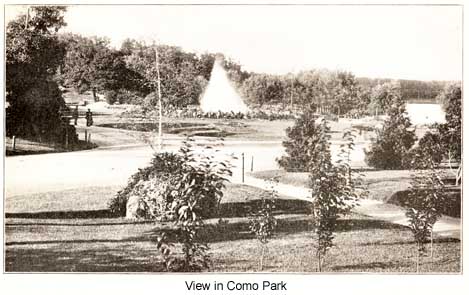
Como Park, which bears the just distinction of being the most beautiful public summer resort of its size and kind in America, embraces 402 acres. It is under the direct control of the Board of Park Commissioners and the immediate supervision of Frederick Nussbaumer, the superintendent of parks. Besides being city property, available for park purposes, Lake Como did not figure largely in the scenic and social annals of St. Paul until 1891, when the park commissioners assumed entire charge of parks. Before this, from 1873, to 1891, the city council had directed all park improvements and little had been done toward enhancing the natural beauty of Como. In 1891, however, with Mr. Nussbaumer in charge, the little lake and its shores experienced a wonderful change. And never since that time has the hand of improvement halted until today Como stands unrivalled, a spot as nearly perfect as an earthly Adam and Eve could wish it.
During 1891 the park was not separately policed, but in 1892, the first two commissioned park policemen were appointed at a salary of $50 a month. The number gradually increased, six men, the size of the present force, being on duty in 1897. With the season of 1899 the pay of park policemen was raised to $55 monthly. In addition to the commissioned officers there are usually a few "specials" and watchmen on the grounds.
A park policeman's term of service has always been six months, from May 1 to November 1, of each year, but for the past two years one man, William S. McIntire, has been on duty throughout the year, acting as sergeant or roundsman during the summer season.
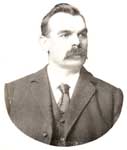 FREDERICK NUSSBAUMER
FREDERICK NUSSBAUMER
A consummate artist, but withal unassuming and genial in his relation to the countless thousands who have occasion to admire his handiwork, Frederick Nussbaumer, the superintendent of St. Paul Parks, today occupies the position of a man who has built his own monument. "A thing of beauty is a joy forever," and Como park, the pride of St. Paul, can never other than redound to the credit of the man whose skill saved it from degenerating into a worse than useless mud hole. Mr. Nussbaumer was born in Baden, Germany, Nov. 7, 1850, and received a liberal education in the public and normal schools of his native city. When sixteen he became an assistant in his father's greenhouse and in 1867 went to Moscow, Russia, and to Paris, where he was very successful as a landscape gardener. With the outbreak of the Franco-Prussian war in 1870 he enlisted as a citizen of the "Fatherland," and won many laurels during his two years of service. From 1872 to 1877 he was a florist in the "old country;" then he came to St. Paul and followed market gardening for the next three years. This not being directly in his line he gave it up and became a guard at the workhouse. Before and after that time he had shown great taste and ability in the construction of landscape work given him by the board of park commissioners, and in 1891, when it assumed exclusive control of Como, he was appointed superintendent of parks, with headquarters there. Since then all parks — and St. Paul has a great many — have shown decided improvement, but it is most notable at Como and at Indian Mound Park, perhaps because their rehabilament was in the nature of a gigantic undertaking.
Mr. Nussbaumer lives in a decidely pretty frame house within easy walking distance of the main pavilion. He is a member of the A. O. U. W. and the Sons of Hermann.
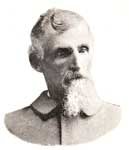 SERGT. WILLIAM S. McINTIRE
SERGT. WILLIAM S. McINTIRE
The sergeant of the park police force is William S. McIntire, a veteran soldier, and a man of no little executive ability. He was born in Bloomington, Ill., Aug. 21, 1843. On leaving the public schools there he followed his father's occupation, that of house moving, until he was eighteen. Then his patriotism rose to the surface and determined his next position. Brimful of enthusiasm and glorying in the cause which called him, perchance to untimely death or indescribable suffering, he joined Company C, 5th Illinois Cavalry, in July, 1861, and remained "a boy in blue" until the end of the civil war. Then he returned to Bloomington and resumed his old calling, in his father's employ. After three years he branched out for himself and was for over a decade of years one of the best known housemovers of his native place. During the last nine years of his residence there he was on the Bloomington police force.
April 7, 1886, he came to St. Paul and established himself as a house-mover, remaining in business until May 1, 1897, when he received his commission as park policeman from Mayor Doran. A year after he was promoted to his present position.
Sergt. McIntire is married and has one son, Frank. The family residence is at 1121 Churchill av. The sergeant is an active member of Garfield Post, G. A. R.
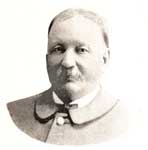 THOMAS E. BYRNE
THOMAS E. BYRNE
A Minnesota veteran who gave three of the best years of his life for his country is Thomas E. Byrne. He was born in New York City on Aug. 13, 1845, and when a boy of thirteen came to St. Paul with his parents. For the next few years he went to school and also learnt the trade of a steam-fitter. Then on his seventeenth birthday, in August, 1862, he enlisted with the "boys in blue," and marched away down south in the ranks of Company H, 8th Minnesota. Three years in the service marked his war experience and on his return home he resumed his trade. In 1874 he was married to Miss Mary E. Williams, a St. Paul lady, at Anoka, Minn., and they have two children, Alfred C. and Miss Edna. Early in the 80's Mr. Byrne took up his residence on a homestead of 160 acres near Grand Forks. After three years he started a restaurant in the latter place. A restaurant in South St. Paul and a steam laundry in St. Paul were successive ventures. In 1894 he was appointed chief engineer of the Court House, but when the contract for heating was let to a private company he lost his position. Last spring Mayor Kiefer commissioned him one of the Como Park force and he has since won not only the regard of all his associates but a record for faithful performance of duty. Officer Byrne is a member of the Union Veteran Protective association. He resides at No. 46 Central av. W.
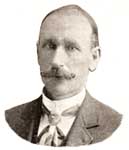 GUSTAVE EBERDT
GUSTAVE EBERDT
Is a son of a veteran of the civil war, his father having served in the Second and Sixth Minnesota's for four years. He was born in Winona, Minn., May 11, 1859, and came to St. Paul with his parents when he was a year old. They subsequently removed to Minneapolis, where his father died, leaving three small children to make their own way in the world. As a consequence, Gustave, who was only seven at the time, had to pick up a schooling as best he could. Eighteen years of his life was spent as a gardener, his widowed mother receiving a goodly share of his income. He was also employed as a carpenter and painter, working in that capacity at the time Mayor Kiefer gave him his present commission on April 15. 1899. He is a member of the Sons of Veterans. Nov. 18, 1889, Officer Eberdt was married to Miss Louisa Ellwenger, and they have two sons, Charlie F., aged 8, and Harry H., aged 6, to brighten their home at No. 348 University av. W.
 CHARLES TRUAX
CHARLES TRUAX
That a military training frequently makes a splendid police officer is evinced by the fact that not a few of the best men on the St. Paul force were at one time engaged in the battles of the civil war, from start to finish. Charles Truax hails from the Green Mountain state, and on the 15th of last September was fifty-two years old. When only sixteen he enlisted in Company H, 3d Vermont Volunteer Infantry, at Brattleboro and served until mustered out in July, 1865, at the close of the war. Not without being severely scarred, however, for on May 6, 1864, in the battle of the Wilderness, he came near losing his life because of a ball which just missed his heart. During the following nine years he worked alternately as a carpenter and a passenger brakeman on the Central Vermont Railway. Prescott, Wis., and Crookston, Minn., were subsequent locations and in 1884 he came to St. Paul. He was employed as a carpenter for some time, and while the panorama of the Battle of Gettysburg was on exhibit in St. Paul actively assisted Capt. Castle in the undertaking. In 1891 he joined the police force and served five years, at the end of that time going back to his old home in Vermont. After a year and a half he returned to St. Paul and in June, 1898, was commissioned a park patrolman.
Mr. Truax was married to Miss Leora Kenney, a native of Brattleboro, Vt., at Prescott, Wis., in 1874. He is a member of Acker Post, No. 21, G. A. R., and resides at No. 128 7th st. W.
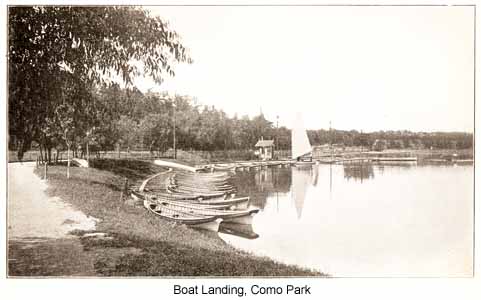
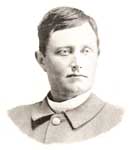 CHARLES TUNBERG
CHARLES TUNBERG
One of the park policemen who have during the past summer done so much toward making Como the most orderly of pleasure resorts, was born in Sweden May 20, 1857. Before coming to this country in 1882 he learnt the trade of a stationary engineer and also took a wife, bringing his bride, formerly Miss Charlotte Peterson, with him on his voyage across the ocean. They came directly to St. Paul, and he obtained employment at the C., St. P., M. & O. roundhouse. After that he worked at the carpenter trade for over ten years. May 1, 1897, he was commissioned a park patrolman by Mayor Doran. Officer Tunberg belongs to the Swedish Brethren Society. He has five children and the family residence is at 659 Wells st.

